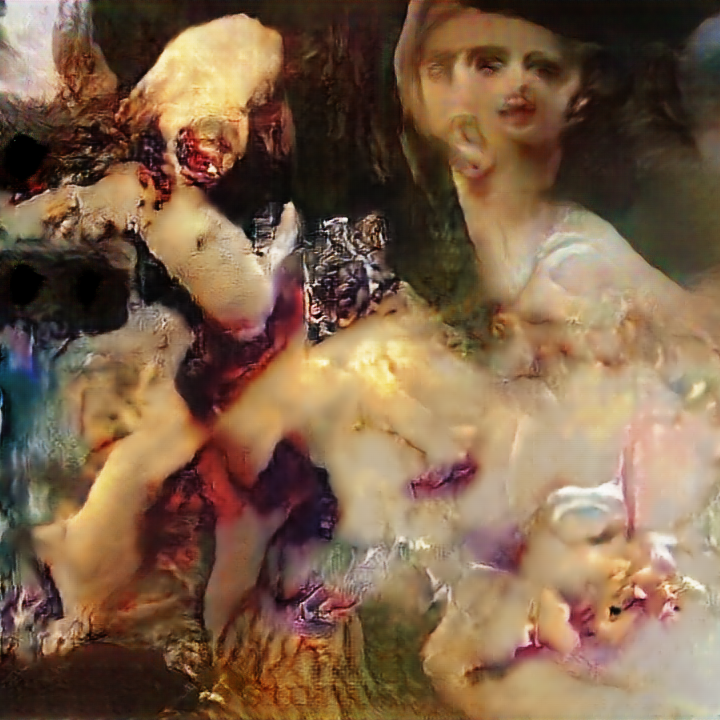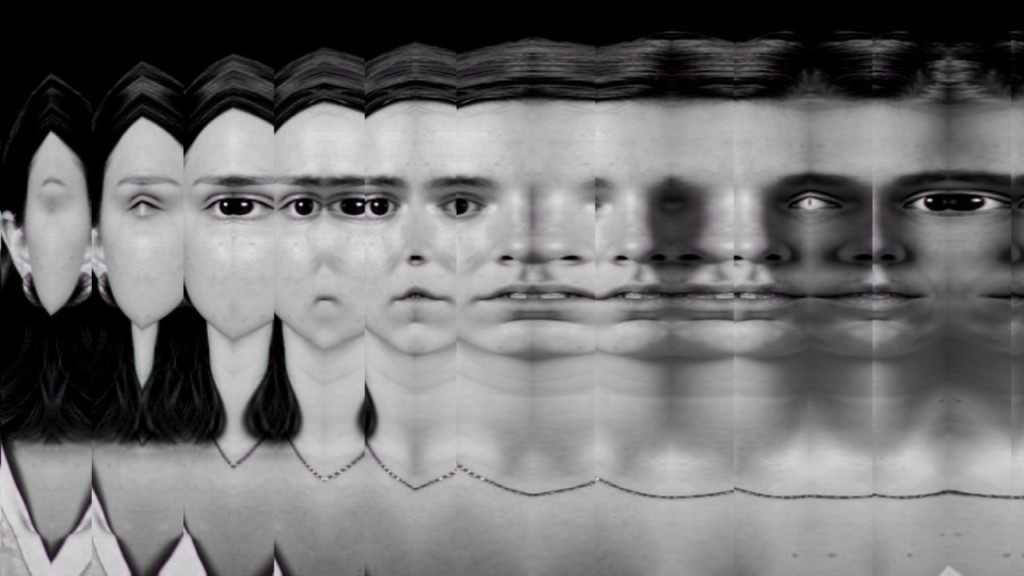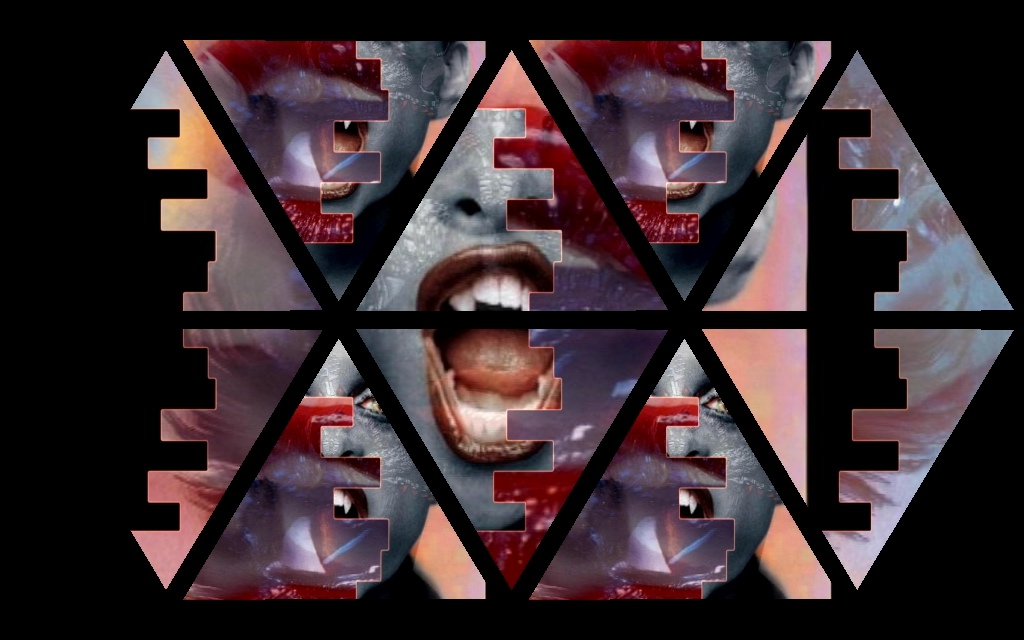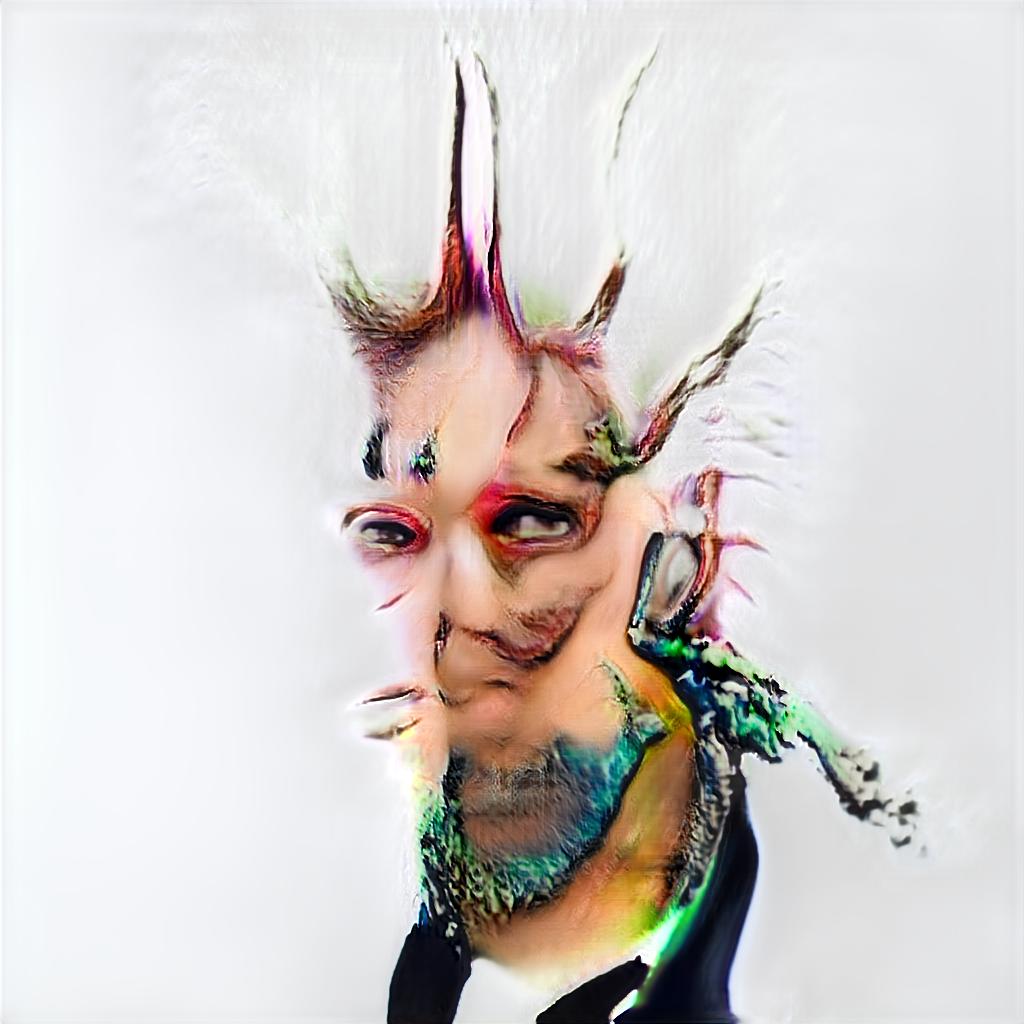AI and GPU tricks, with their rigid rigorous demands, can often come out as carbon copy clones. Not so in the work of Vadim Epstein, an artist and former physicist based in Moscow. In his hands, machine learning becomes painterly.
Vadim got his school education in theoretical physics, but self-taught a range of work in computer science, media art, and VJing, starting in the mid 1990s. In his autobiographic text, he explains that the Web was a solution to the feeling that there was “no need to create something new” – instead offering the chance to re-imagine existing material as DJ, VJ, or even webmaster.
Vadim’s work is hyperactive and relentless. I asked him for documentation and got folders upon folders of images. Because he’s doing club gigs and VJ gigs and work for fun and experimentation and corporate events and so on and so forth, it’s also very often real-time and improvisatory. He’s not just doing a precious gallery piece or demo here or there. As a result, it’s also more exhaustively iterative, with his techniques evolving daily.
This week, he updated his showreel, full of “old and recent” work and live shows, made with the graphical dataflow development environment vvvv, plus custom shader code (utilizing the capabilities of internal graphics hardware), and TensorFlow, the machine learning library.
(Tokee’s “Numbers” is the music.)
Even as the technique of using GANs – Generative Adversarial Networks – spreads, Epstein’s work stands out, a kind of Old Dutch Master. The approach is based on using two neural networks for set-it-and-leave-it AI magic. One network uses a model to spit out images, the other network tests whether those images score well against known existing images. It’s a little bit like a couple of grade school kids quizzing one another on language flash cards – it’s a game where one has the answers and tries to drill the other so they improve.
Both Vadim’s still and motion images are ethereal acid trips, beginning to push to some strange new fluidity of the images. Here’s his work with Nicolai Ivanov:
“Subcultural Genetics” – https://subcultural-genetics.com
Photo idea & dataset – Nicolai Ivanov; project for the Photo in Media program of Multimedia Art Museum, Moscow.
To anyone who might think this could turn into a trope available everywhere, like the popular image processing filters of the 90s, Vadim says – bring it on. So he’s prolific with pushing this work further, and is even readying courses and code that will help others give it a go. I think it’s basically the VJ’s creed, following the ethos of the DJ. Rather than worry that other people have access to the same toys, you freely embrace democratization – in the believe you can hold your own in a battle against other artists, in the heat of the moment.

Vadim isn’t a one-trick pony, of course, having done live visuals since the mid 90s; machine learning is just the latest live visual novelty. Using tweaked code and some custom GANs (with a dose of the TensorFlow and PyTorch libraries), he trains the nets on piles of images, then builds a performance around live-processing the results. To make that a reality, he works with vvvv as a convenience wrapper, so he can manipulate output of images in real time. Our friend Stanislav Glazov, also a Moscow native but now based in Berlin, has assisted with a TouchDesigner port – I expect it might make some cameo at the summit coming later this month.
Just like Stas Glazov. Vadim makes part of his living by offering in-depth paid courseware. For now, it’s Russian-language only, but he says an English version is in the works. (Meanwhile, you just have to accept Russian as the new lingua franca, or certainly for post-industrial, generative visuals of the ex-Soviet sphere, obviously!)
https://bangbangeducation.ru/course/neuralnet
If you don’t want to wait, and for a brush-up of the basics, it’s worth checking David Foster’s book on the topic (just published this summer by O’Reilly) and accompanying GitHub repository:
https://github.com/davidADSP/GDL_code
Beautiful digital LSD, perhaps. Nightmare transporter accident rendition of Michael Jackson’s “Black or White,” maybe. I find them irresistible. Vadim for his part calls it a new genre, “trash neurror.”
Regardless, it’s worth checking Vadim’s other work and long-running evolution and work. Even for all the push for new and shiny, making visuals expressive might also be akin to learning an instrument – it comes from years in the woodshed, and playing in the trenches.
More:
http://eps.here.ru/ [Vadim’s main homepage]
https://www.instagram.com/eps696/



See also this interview from 2015 and installation from late 2014:
INSIDE CAMP #14 – Art is just outcome of the human life
And if you like this sort of thing, and you’re near Montreal in August, well:



